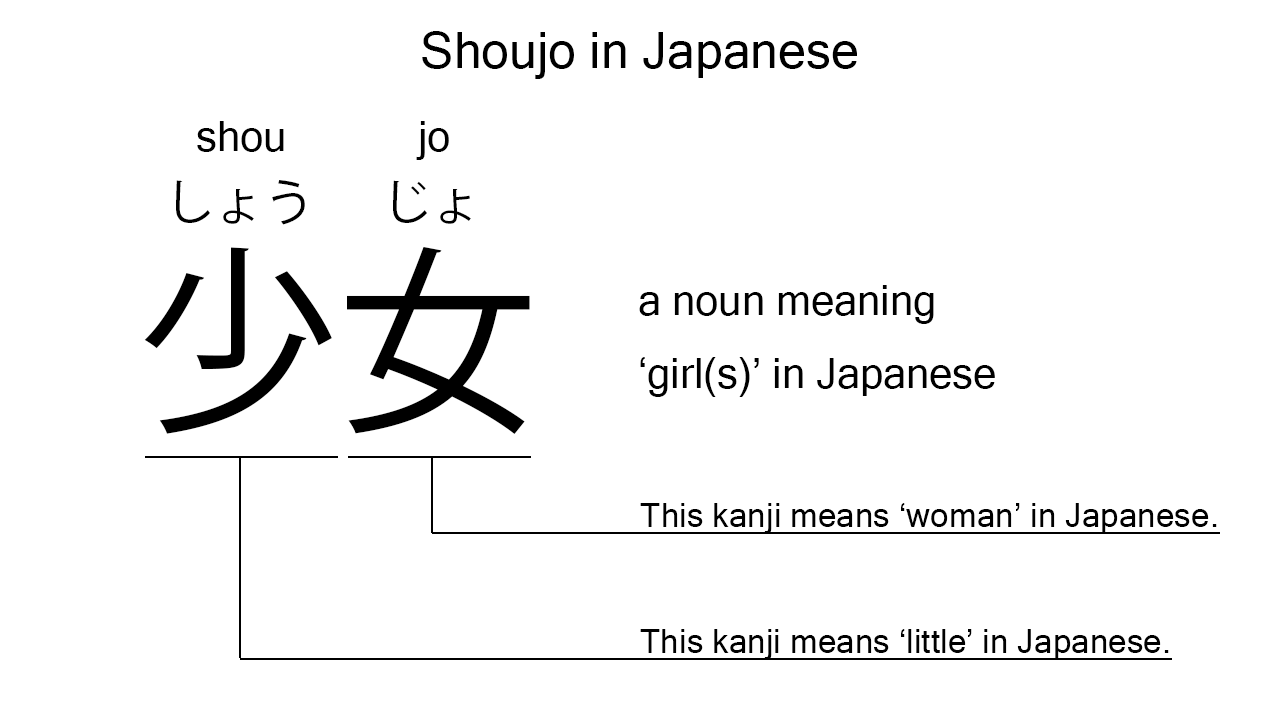What does “shoujo” mean in Japanese?
Native speakers use shoujo to mean a ‘girl’ in Japanese. Perhaps, some Japanese learners know this word as it is sometimes used in Japanese movies, songs, novels, manga, anime, and the like. In this blog post, however, I’m explaining this word in detail based on its kanji expression. And also, I’m explaining how to use it through example sentences. My explanations would help Japanese learners understand shoujo more clearly. Then, let’s get started!
Contents
Definition and meaning of “shoujo”
Let me start with the definition and meaning of shoujo.
- shoujo – 少女 (しょうじょ) : a noun meaning a ‘girl’ in Japanese. This can also work as plural. Learn more about Japanese plural.
This noun is suitable more for formal and business situations than for casual conversations. Actually, Japanese manga for girls are called shoujo manga. This is obviously part of the Japanese (or perhaps, not only Japanese) manga business.
The definition and meaning are simple and clear. To understand this noun more clearly, however, let me explain its kanji characters in detail, one by one.
Shoujo in kanji
The kanji expression of shoujo consists of the following two kanji characters:
- 少 : a kanji character widely used to mean ‘little’, ‘small’, ‘tiny’, or such in Japanese. This can also be found in other words like sukunai.
- 女 : a kanji character widely used to mean a ‘woman’ or ‘female’ in Japanese.
From these two kanji characters, we can understand that shoujo literally means a ‘little woman’ in Japanese. This literal interpretation is not completely in line with the actual meaning, but still very close, I think. As we all know, girls are somehow little women.

When we meet new kanji expressions, we should check their kanji characters in detail to understand their meanings clearly and deeply. In many cases, kanji characters tell us a lot about the meanings of the expressions they form. Actually, here, we could get the better understanding of shoujo through the detailed kanji check above.
So far, I’ve explained the definition and meaning of shoujo together with its kanji characters. Then, let me explain how to use it through the example sentences below.
How to say “girls” in Japanese
kanojo tachi wa mada shoujo desu – 彼女たちはまだ少女です (かのじょたちはまだしょうじょです)
They are still girls.
Below are the new words used in the example sentence.
- kanojo – 彼女 (かのじょ) : a pronoun meaning ‘she’ in Japanese.
- tachi – 達 (たち) : a suffix used after a noun or pronoun to make its plural form. In the example, this is used after kanojo to make its plural form, kanojo tachi, which means ‘they’ in Japanese.
- wa – は : a binding particle working as a case marker or topic marker. In the example, this works after kanojo tachi to make the subject in the sentence.
- mada – まだ : an adverb meaning ‘still’ in Japanese.
- desu – です : an auxiliary verb used after a noun or adjective to make it polite. Probably, this is well known as a part of the Japanese desu form. In the example, this is used after shoujo to make it sound polite.
This is a typical usage of shoujo. In this example, it works as plural to mean ‘girls’ in Japanese. When we want to mean a ‘girl’ or ‘girls’ in Japanese, this noun is a very good option.
Another example of “shoujo”
watashi wa shoujo manga ga totemo suki desu – 私は少女漫画がとても好きです (わたしはしょうじょまんががとてもすきです)
I love shoujo manga so much.
Below are the new words used in the example sentence.
- watashi – 私 (わたし) : a pronoun meaning ‘I’ in Japanese.
- manga – 漫画 (まんが) : a noun meaning ‘manga’ or ‘comic’ in Japanese. This noun itself is already very famous as part of the Japanese culture, I think.
- ga – が : a case particle used to make the subject word or the object word in a sentence. In the example, this is used after shoujo manga to make the object in the sentence.
- totemo – とても : an adverb of degree meaning ‘very’, ‘much’, ‘so’, or such in Japanese. In the example, this works in front of suki to emphasize its meaning. This has been reflected as ‘so much’ in the English sentence.
- suki – 好き (すき) : the stem part of the na-adjective, sukina, which means ‘favorite’ in Japanese. Native speakers, however, quite often use this as an individual word to mean ‘to like’ or ‘to love’ in Japanese. In the example, this is used to mean ‘to love’ in Japanese.
This is another example of shoujo. In this example, it works as a part of the longer noun, shoujo manga, which literally means ‘manga for girls’ in Japanese. This noun has been exported to many countries and therefore is already very famous as one genre among Japanese manga fans, I think.
Summary
In this blog post, I’ve explained the definition and meaning of shoujo in detail based on its kanji expression. And also, I’ve explained how to use it through the example sentences. Let me summarize them as follows.
- shoujo – 少女 (しょうじょ) : a noun meaning a ‘girl’ in Japanese. This can also work as plural. This noun is suitable more for formal and business situations than for casual conversations. Actually, Japanese manga for girls are called shoujo manga. This is obviously part of the Japanese (or perhaps, not only Japanese) manga business. These two kanji characters literally mean a ‘little woman’ in Japanese. This literal interpretation is not completely in line with the actual meaning, but still very close, I think. As we all know, girls are somehow little women.
Hope my explanations are understandable and helpful for Japanese learners.
Leave a Reply